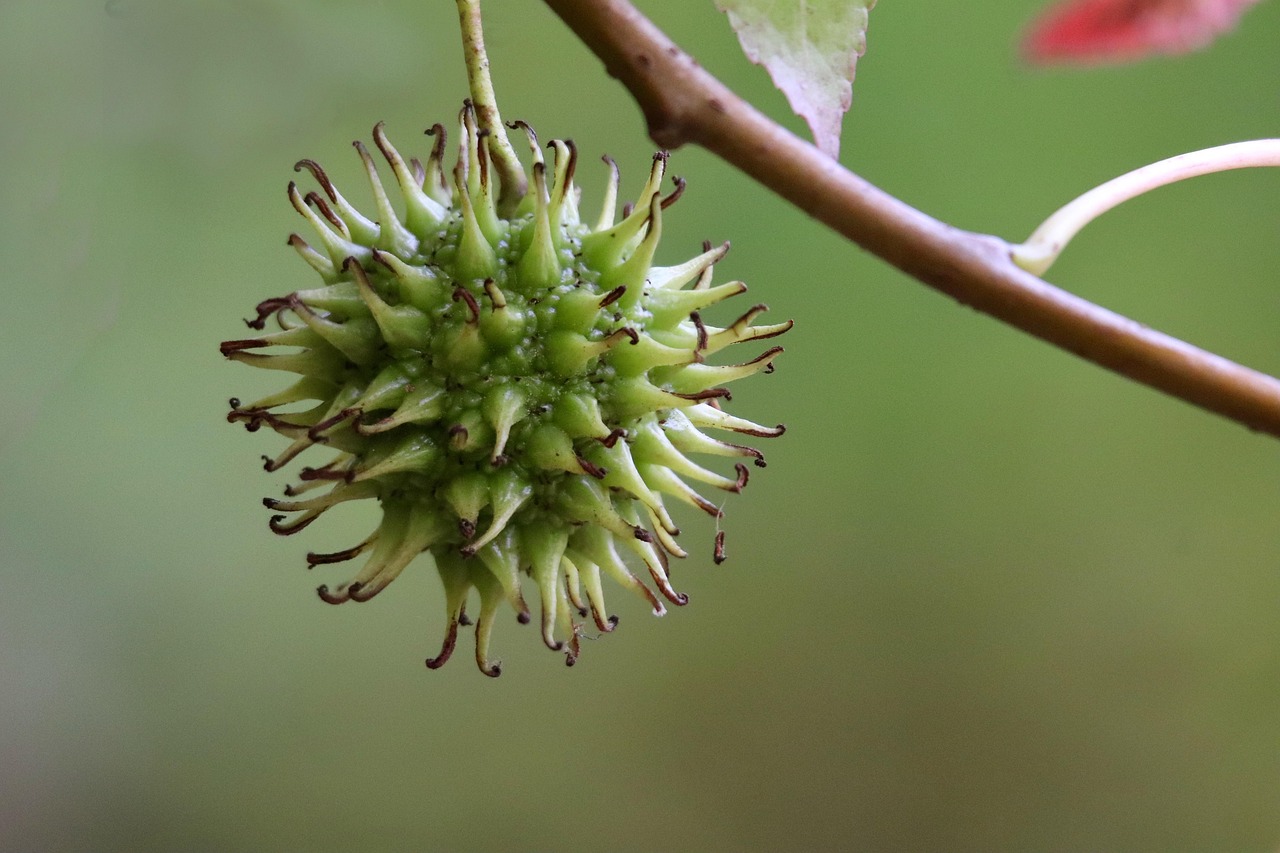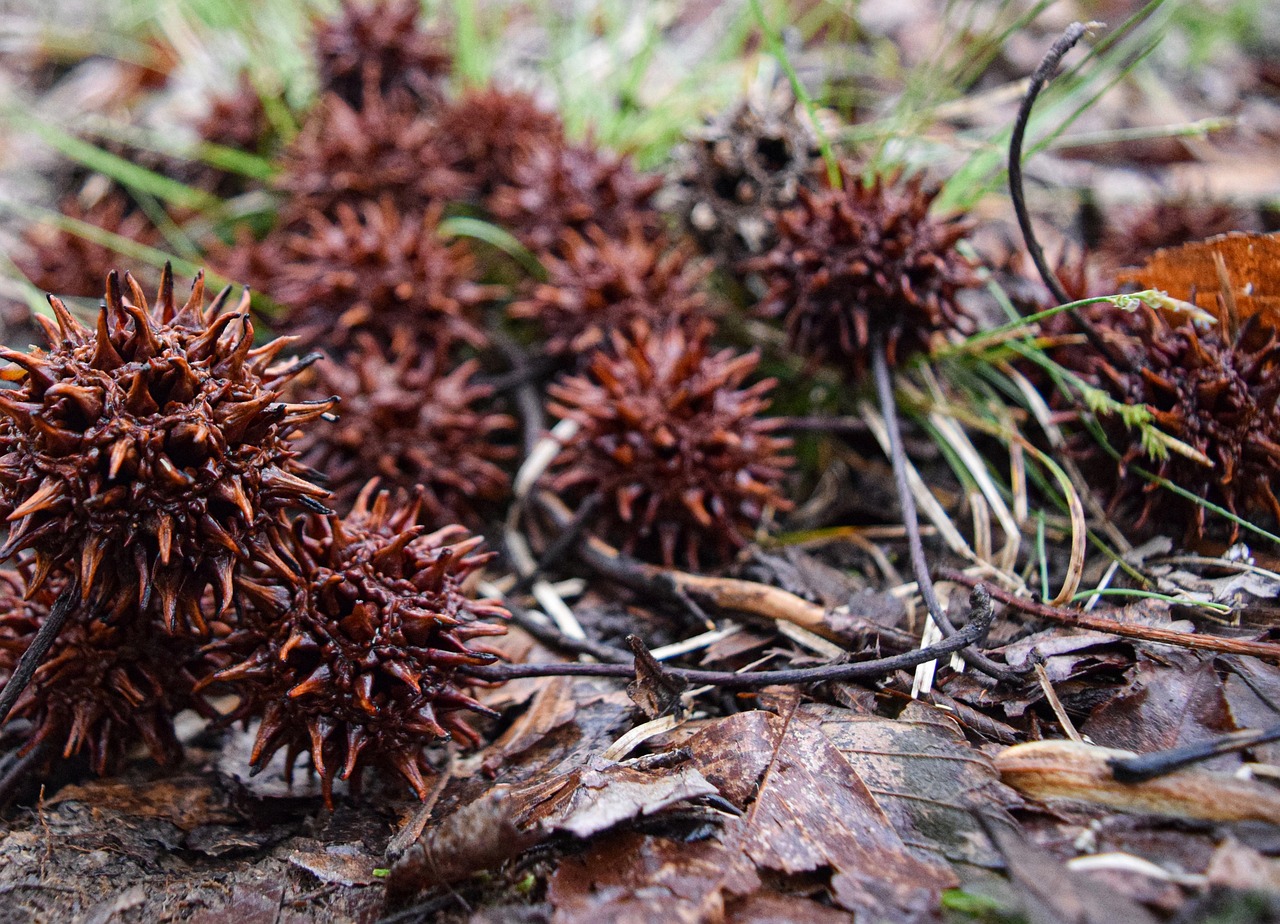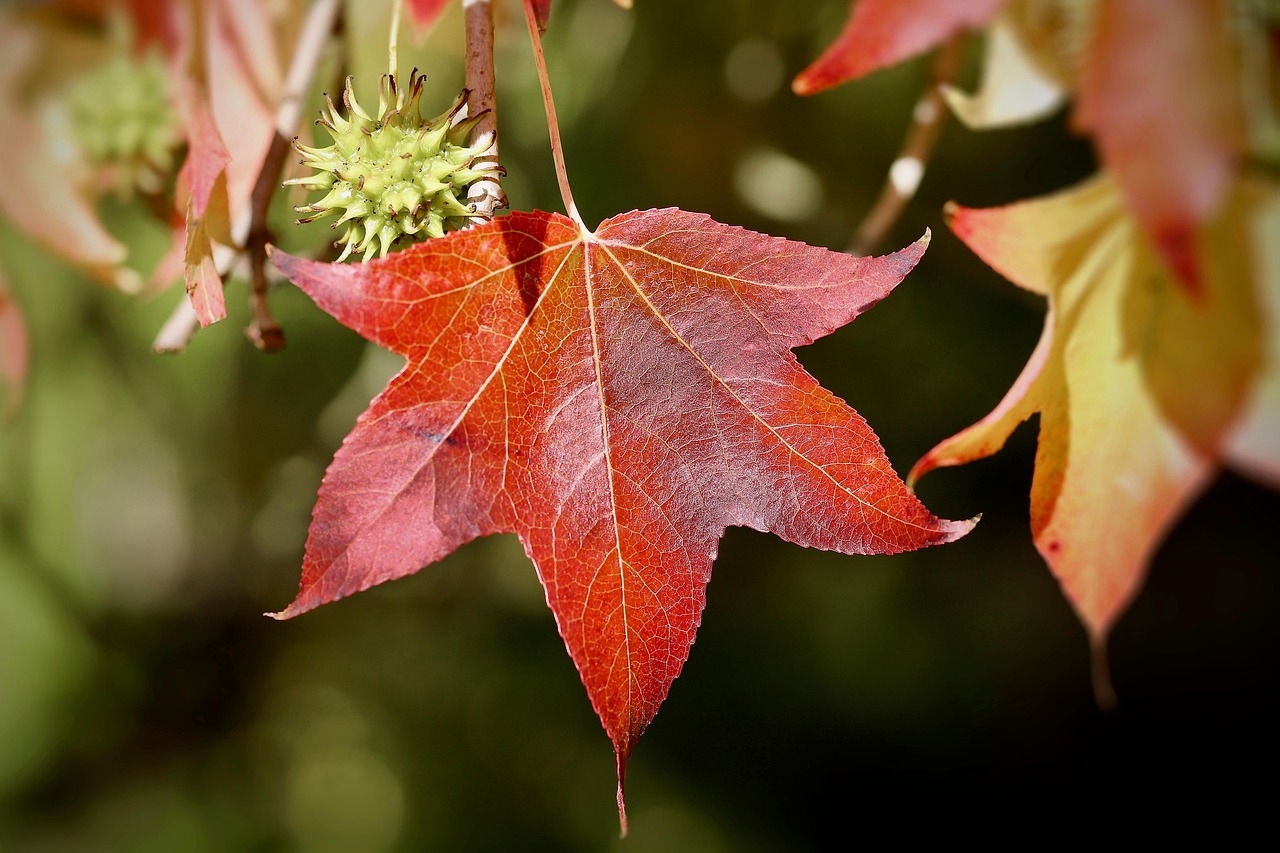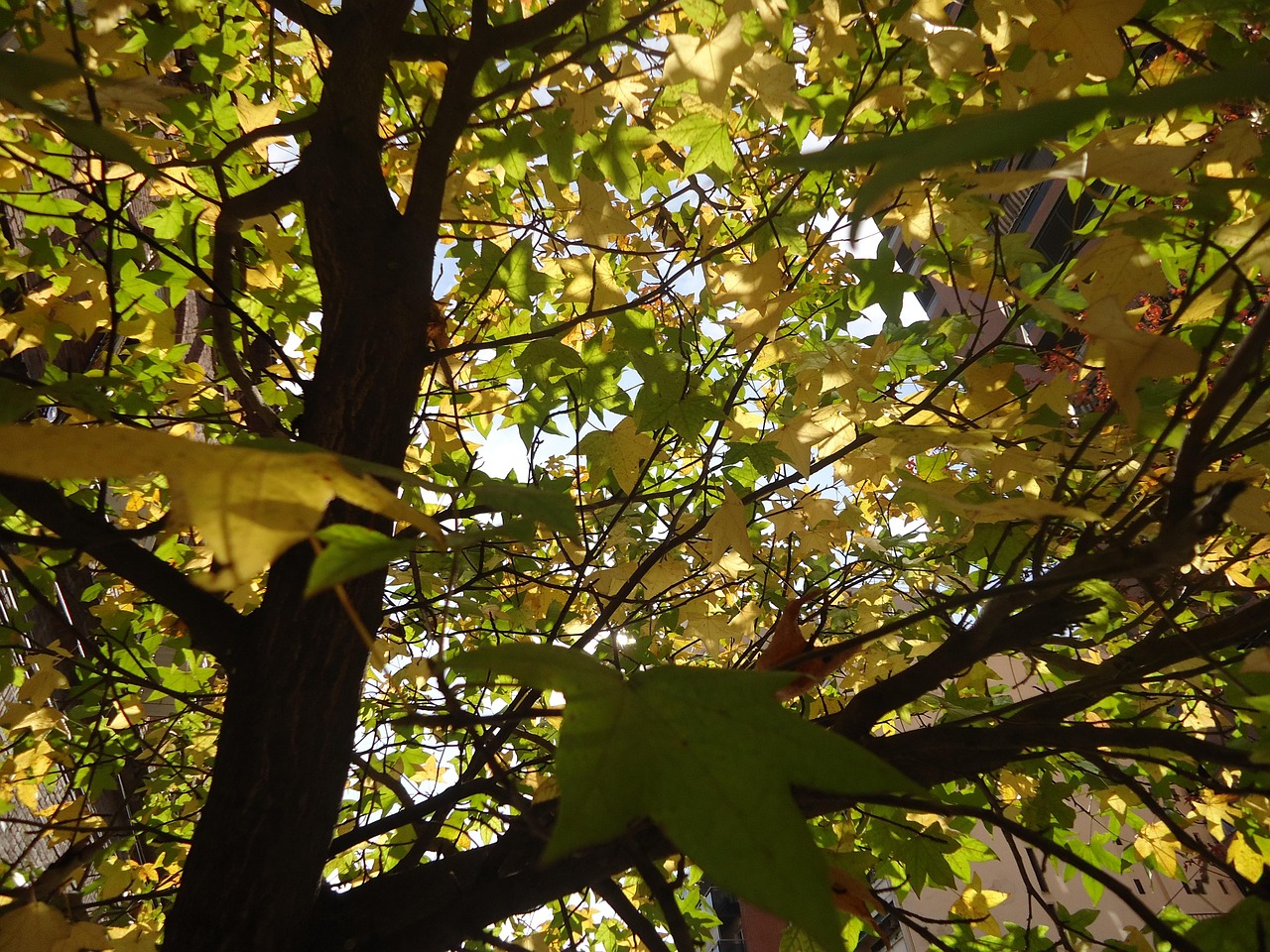Sweetgum trees are commonly available at local nurseries, garden centers, and online retailers. These trees can often be found in plant sales or arboretums. When purchasing, check for reputable sources to ensure healthy specimens.
Understanding Sweetgum Trees

Sweetgum trees, scientifically known as Liquidambar styraciflua, are deciduous trees native to the southeastern United States. They are known for their star-shaped leaves, which turn vibrant shades of red, orange, and yellow in the fall. The tree can grow up to 60-100 feet tall, making it an impressive addition to any landscape.
One of the most notable features of the sweetgum tree is its unique seed pods, which are spiky and resemble small balls. These pods can create a bit of a mess in yards but also serve as a food source for various wildlife. The trees are often appreciated for their aesthetic value and hardiness, making them suitable for urban settings.
If you are considering adding a sweetgum tree to your yard, knowing where to find them is essential. Below you will find some of the best places to buy sweetgum trees, along with key considerations when selecting one.
Where to Buy Sweetgum Trees
There are several reliable sources for purchasing sweetgum trees. Here are some of the most common options:
- Local Nurseries: Visiting a local nursery is one of the best ways to find healthy sweetgum trees. Staff can provide guidance on the tree’s care and suitability for your area.
- Garden Centers: Many garden centers stock various trees, including sweetgums. This option allows you to see the trees in person before buying.
- Online Retailers: Numerous online plant retailers offer sweetgum trees. While buying online provides convenience, ensure you choose reputable sellers with good reviews.
- Arboretums and Botanical Gardens: These institutions often sell plants and may have sweetgum trees available during specific seasons.
- Plant Sales: Local plant sales or community events may feature sweetgum trees among their offerings.
Key Considerations
When purchasing a sweetgum tree, consider the following factors:
- Size: Sweetgum trees come in different sizes. Ensure you select one that fits your available planting space.
- Health of the Tree: Look for trees with healthy leaves and no signs of disease or pests.
- Soil Compatibility: Sweetgum trees prefer well-drained soil. Check if your soil type is suitable for planting.
- Climate Adaptability: Ensure that the variety you choose is suitable for your local climate conditions.
Pricing Information
The price of sweetgum trees can vary widely based on size, age, and location. Here is a general pricing guide:
| Tree Size | Average Price |
|---|---|
| 1-2 ft | $20 – $30 |
| 3-5 ft | $50 – $75 |
| 6-8 ft | $100 – $150 |
By considering these sources and factors, you can successfully find and purchase a sweetgum tree that will thrive in your landscape.
Types of Sweetgum Trees
When considering the purchase of sweetgum trees, it is important to understand that there are several varieties available. Each type has unique characteristics, making them suitable for different landscapes and purposes. Below are some of the most common types of sweetgum trees:
- American Sweetgum (Liquidambar styraciflua): This is the most well-known variety. It features star-shaped leaves and produces the distinctive spiky seed pods.
- Chinese Sweetgum (Liquidambar formosana): Native to Asia, this variety typically has larger leaves and is often used in ornamental landscaping.
- Mexican Sweetgum (Liquidambar styraciflua): Similar to the American variety, the Mexican sweetgum is shorter and can thrive in a wider range of soil types.
- Fastigiata Sweetgum: This variety grows in a columnar shape, making it ideal for smaller spaces or urban environments.
Growing Conditions for Sweetgum Trees
Understanding the growing conditions required for sweetgum trees is crucial for ensuring healthy growth and development. These trees thrive under specific environmental conditions:
Soil Requirements
Sweetgum trees prefer moist, well-drained soils but can adapt to a variety of soil types, including sandy and clay soils. It is essential to avoid waterlogged conditions, as excessive moisture can lead to root rot. Testing the soil pH can also be helpful, as sweetgum trees generally prefer slightly acidic to neutral pH levels (around 6.0 to 7.0).
Light Requirements
These trees thrive in full sun and require at least six hours of direct sunlight daily. While they can tolerate partial shade, optimal growth occurs in bright, sunny locations.
Climate Preferences
Sweetgum trees are adaptable to various climates but grow best in USDA Hardiness Zones 5 to 9. They are tolerant of both hot summers and cold winters. However, excessive heat or cold can stress the tree, affecting its growth and health.
Caring for Sweetgum Trees

Caring for sweetgum trees involves several important practices to ensure they remain healthy and vibrant. Here are some key care tips:
- Watering: Newly planted sweetgum trees need regular watering until established. Water deeply once a week during dry spells, especially in the first couple of years.
- Fertilizing: Apply a balanced fertilizer in early spring to promote healthy growth. Avoid over-fertilizing, as this can lead to weak growth and increased susceptibility to pests.
- Pruning: Regular pruning helps maintain the shape of the tree and remove any dead or diseased branches. This is best done in late winter or early spring before new growth begins.
Pest and Disease Management
Sweetgum trees are relatively resilient but can be affected by certain pests and diseases. Awareness of potential issues is important for maintaining tree health:

- Pests: Common pests include aphids and scale insects. Regular monitoring and appropriate insecticidal soap can help control these pests.
- Diseases: Fungal diseases such as leaf spot may affect sweetgum trees. Ensuring proper air circulation and avoiding overhead watering can reduce the risk.
By understanding the types of sweetgum trees, their growing conditions, and care requirements, you will be better prepared to select and nurture these beautiful additions to your landscape.
Environmental Impact of Sweetgum Trees
Sweetgum trees play a vital role in their ecosystems. They provide numerous environmental benefits that contribute to the health of both urban and natural landscapes. Understanding these impacts can help you appreciate the importance of planting and maintaining sweetgum trees.
Carbon Sequestration
One of the most significant benefits of sweetgum trees is their ability to sequester carbon dioxide from the atmosphere. Like all trees, sweetgums absorb CO2 during photosynthesis, helping to mitigate the effects of climate change. A mature sweetgum tree can absorb approximately 48 pounds of carbon dioxide each year, making it an effective tool for improving air quality.
Wildlife Habitat
Sweetgum trees provide essential habitat and food for various wildlife species. Their leaves offer shelter for birds and insects, while the spiky seed pods serve as a food source for squirrels, birds, and other small animals. This makes them an integral part of local ecosystems:
- Bird Species: Many birds are attracted to the seeds and foliage of sweetgum trees, including woodpeckers and various songbirds.
- Pollinators: The flowers of sweetgum trees attract pollinators such as bees, which are crucial for maintaining biodiversity.
- Mammals: Small mammals like squirrels and chipmunks rely on sweetgum seeds for sustenance.
Landscape Use and Aesthetic Appeal
Beyond their ecological contributions, sweetgum trees are valued in landscaping for their aesthetic appeal. Their distinctive star-shaped leaves and vibrant fall colors make them a popular choice for homeowners and landscape designers alike.
Ornamental Uses
Sweetgum trees can be used in various ornamental applications, including:
- Shade Trees: With their expansive canopy, sweetgums provide excellent shade, making them ideal for parks and residential yards.
- Street Trees: Many urban planners choose sweetgum trees for streetscapes due to their tolerance of urban conditions and striking appearance.
- Specimen Trees: Their unique shape and seasonal color changes make them a perfect focal point in gardens.
Seasonal Changes
The visual appeal of sweetgum trees varies significantly throughout the year:
- Spring: New leaves emerge in spring with a vibrant green color, creating a lush canopy.
- Summer: The dense foliage provides excellent shade, making hot summer days more comfortable.
- Fall: As autumn approaches, the leaves turn brilliant shades of red, orange, and yellow, offering a stunning display.
- Winter: In winter, the bare branches still provide structural beauty against a snowy or gray backdrop, showcasing the tree’s unique form.
Challenges of Growing Sweetgum Trees
While sweetgum trees offer many benefits, they also come with certain challenges for homeowners and landscapers. Being aware of these challenges can help you make informed decisions about planting and maintaining these trees.
Seed Pod Mess
The spiky seed pods produced by sweetgum trees can be a nuisance. They tend to fall in large quantities and can create a mess on lawns and walkways. For homeowners, this may require regular clean-up efforts during the fall months.
Root Competition
Sweetgum trees have extensive root systems that can compete with nearby plants for nutrients and moisture. When planting sweetgums near other vegetation or structures, it’s essential to consider their growth habit and potential impact on surrounding plants.
Pest Issues
As mentioned previously, sweetgum trees can be susceptible to certain pests like aphids and scale insects. Monitoring your tree regularly for signs of infestation is crucial for maintaining its health. Implementing natural pest control methods can help minimize the impact on the tree.
By understanding the environmental impact, aesthetic uses, and challenges associated with sweetgum trees, you can better appreciate their value in both natural and urban settings.
Additional Resources for Sweetgum Tree Care

If you are new to growing sweetgum trees or want to enhance your knowledge, numerous resources are available. These can help you understand best practices for planting, caring for, and managing these beautiful trees.
Books and Guides
Several books and guides focus on tree care, including sweetgum trees. Some recommended titles include:
- “The Tree Book: A Practical Guide to Selecting and Maintaining Trees” by Michael A. Dirr
- “Native Trees of the Southeast: A Comprehensive Guide to the Best 100 Species for Planting in Your Yard” by Edward F. Gilman and Bruce G. McCarty
- “Arborist’s Certification Study Guide” by Sharon J. Lilly
Online Resources
Many websites offer valuable information on sweetgum tree care and maintenance. Some trustworthy online resources include:
- The Arbor Day Foundation: Offers information on tree planting and care.
- University Extension Services: Many state universities have extension services that provide region-specific advice.
- Local Gardening Clubs: Often share knowledge and experience regarding local trees, including sweetgums.
Local Workshops and Classes
Many communities host workshops or classes on tree care. Participating in these can provide hands-on experience and direct interaction with experts. Look for events at local nurseries, botanical gardens, or community colleges.
Final Thoughts
Sweetgum trees offer a unique combination of beauty, ecological benefits, and shade, making them a popular choice for both homeowners and landscapers. Their vibrant fall colors and distinctive leaf shapes can enhance any landscape, while their ability to support local wildlife makes them valuable in maintaining biodiversity.
While there are challenges associated with sweetgum trees, such as seed pod mess and root competition, understanding their needs can help mitigate these issues. With proper care and attention, a sweetgum tree can thrive, providing enjoyment for generations.
Whether you choose to buy from local nurseries, garden centers, or online retailers, ensuring you select a healthy tree suited to your environment is critical. By using the resources available and following best practices for planting and maintenance, you can successfully incorporate sweetgum trees into your landscape.
In summary, sweetgum trees are not just beautiful additions but also contribute significantly to our environment. By recognizing their value and implementing informed care strategies, you can enjoy the many benefits they provide while enhancing your outdoor spaces.
